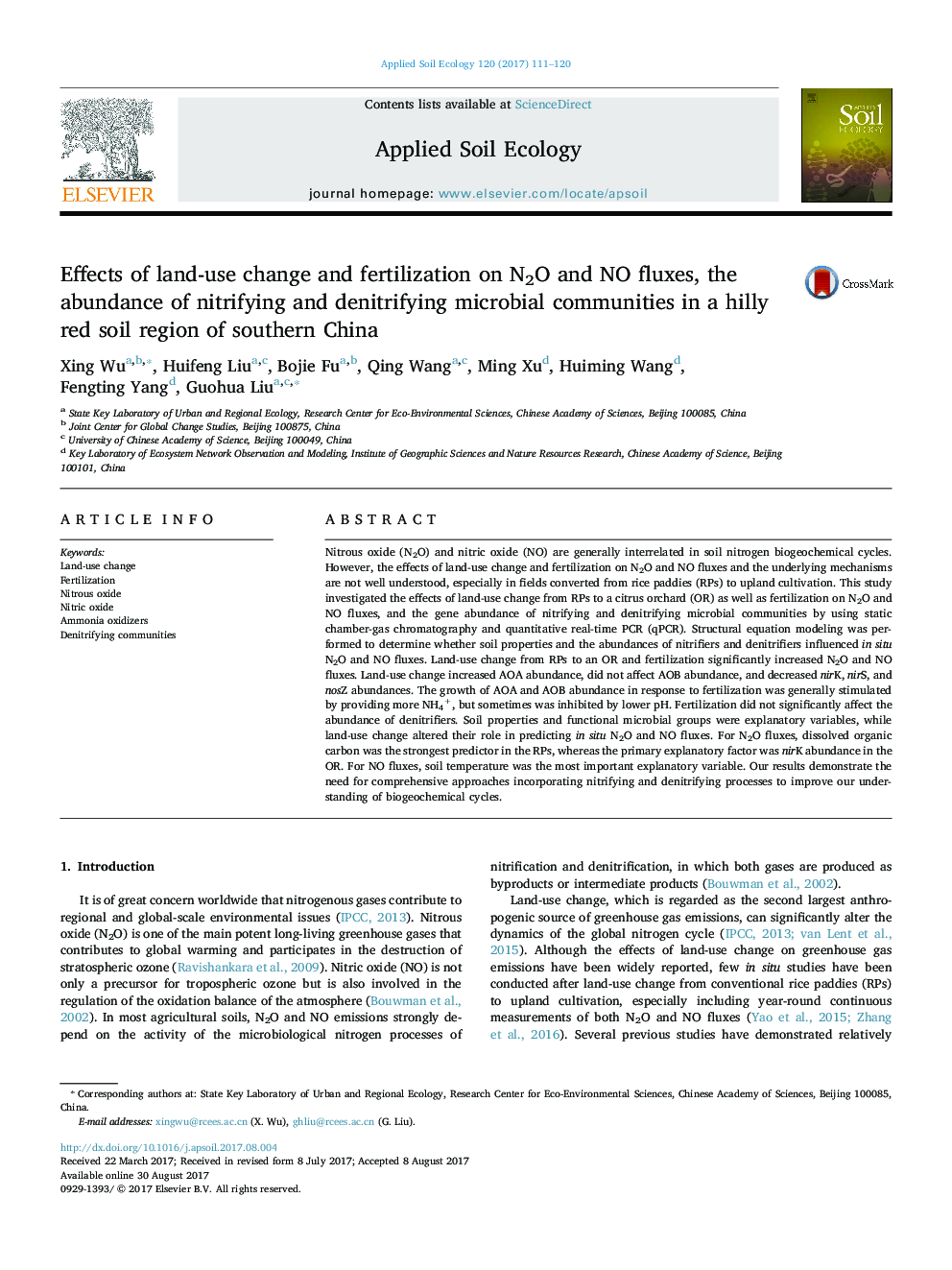| کد مقاله | کد نشریه | سال انتشار | مقاله انگلیسی | نسخه تمام متن |
|---|---|---|---|---|
| 5742578 | 1617764 | 2017 | 10 صفحه PDF | دانلود رایگان |

- Change from rice paddies to citrus orchards and fertilization increased N2O and NO fluxes.
- AOA, nirK, nirS, and nosZ genes abundances were strongly affected by land-use change.
- AOA and AOB growth in response to fertilization was stimulated by NH4+ but sometimes inhibited by pH.
- Functional microbial groups and soil properties were predictors of in situ N2O and NO fluxes.
Nitrous oxide (N2O) and nitric oxide (NO) are generally interrelated in soil nitrogen biogeochemical cycles. However, the effects of land-use change and fertilization on N2O and NO fluxes and the underlying mechanisms are not well understood, especially in fields converted from rice paddies (RPs) to upland cultivation. This study investigated the effects of land-use change from RPs to a citrus orchard (OR) as well as fertilization on N2O and NO fluxes, and the gene abundance of nitrifying and denitrifying microbial communities by using static chamber-gas chromatography and quantitative real-time PCR (qPCR). Structural equation modeling was performed to determine whether soil properties and the abundances of nitrifiers and denitrifiers influenced in situ N2O and NO fluxes. Land-use change from RPs to an OR and fertilization significantly increased N2O and NO fluxes. Land-use change increased AOA abundance, did not affect AOB abundance, and decreased nirK, nirS, and nosZ abundances. The growth of AOA and AOB abundance in response to fertilization was generally stimulated by providing more NH4+, but sometimes was inhibited by lower pH. Fertilization did not significantly affect the abundance of denitrifiers. Soil properties and functional microbial groups were explanatory variables, while land-use change altered their role in predicting in situ N2O and NO fluxes. For N2O fluxes, dissolved organic carbon was the strongest predictor in the RPs, whereas the primary explanatory factor was nirK abundance in the OR. For NO fluxes, soil temperature was the most important explanatory variable. Our results demonstrate the need for comprehensive approaches incorporating nitrifying and denitrifying processes to improve our understanding of biogeochemical cycles.
Journal: Applied Soil Ecology - Volume 120, November 2017, Pages 111-120